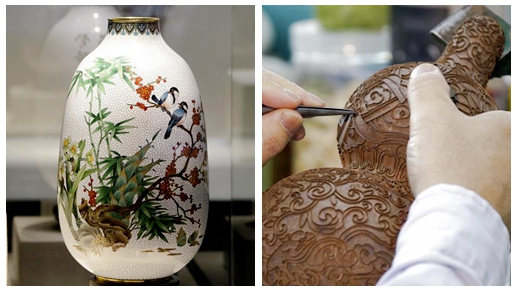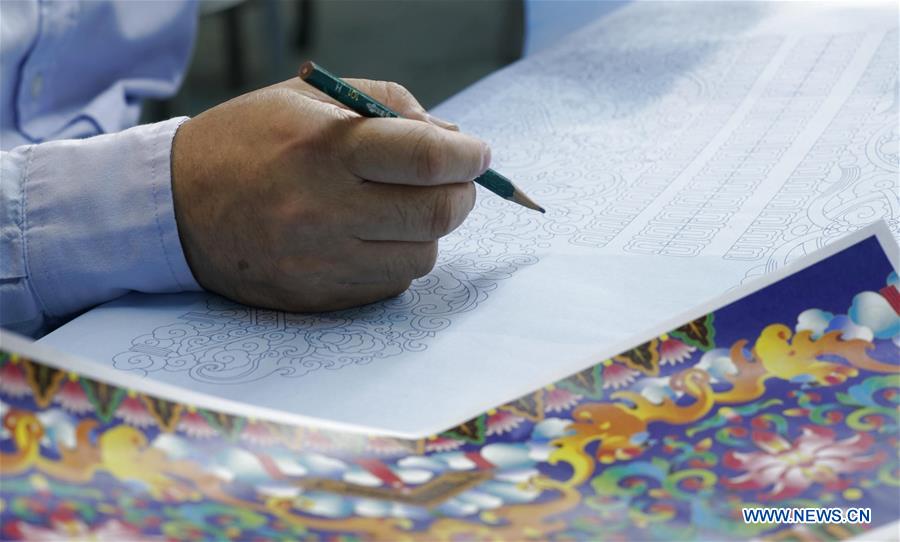Intangible cultural heritage inheritor for Jingtailan cloisonne
 0 Comment(s)
0 Comment(s) Print
Print E-mail Xinhua, September 21, 2020
E-mail Xinhua, September 21, 2020
Zhong Liansheng designs the patterns for the cloisonne body at the Beijing Enamel Factory in Beijing, capital of China, Sept. 15, 2020. In China, "Jingtailan" represents a special cloisonne wrought of copper and porcelain. Introduced from the Arabian countries during the Yuan Dynasty (1271-1368) and becoming popular during the "Jingtai" years of the Ming Dynasty (1368-1644), the Jingtailan cloisonne uses red copper as its body, with patterns structured with copper wires and painted with enamel glaze. The making has to go through dozens of procedures including burning, grinding and gilding. Within 600 years, the craftwork has been integrated into the traditional Chinese art. Zhong Liansheng, director-general for craft and manager-general of the Beijing Enamel Factory, is a national-level intangible cultural heritage inheritor for the Jingtailan cloisonne. Since 1978 when he first started to learn the art, Zhong has been persistent in the making of the Jingtailan cloisonne for over 40 years. In recent years, Zhong has taught lots of apprentices while making breakthroughs in the Jingtailan cloisonne, promoting it as traditional Chinese art in public welfare activities every year. He embodies the spirit of the times into his artwork and continuously brings forth new ideas on the basis of passing down the cultural heritage. His artwork also combines modern decoration with traditional craft. Many of his works have been chosen as national gifts for foreign leaders representing the highest level of the Chinese art. (Xinhua/Li Xin)






Go to Forum >>0 Comment(s)